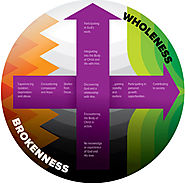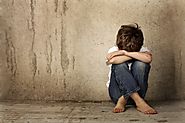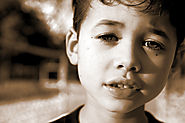-
About
- About Listly
- Community & Support
- Howto
- Chrome Extension
- Bookmarklet
- WordPress Plugin
- Listly Premium
- Privacy
- Terms
- DMCA Copyright
- © 2010-2024 Boomy Labs


Listly by tahilla

How can we model the compassion of Jesus for the needs of the world around us? We are acutely aware of the brokenness in the world which surrounds them. We all have hopes and fears about the future. Too often we provide our children with the adult solutions to some of the world’s problems rather than presenting them with the issue at hand and inviting their suggestions for what could be done. The Internet is filled with stories of children today who are changing their community and the world in their own way. What might be possible with your children if they were given the opportunity?

In recent decades there has been a growing trend for theologians to speak about about the idea of ‘human flourishing’.[1] ‘Flourishing’ is a biological, even ecological word, which evokes images of plants, gardens or whole ecosystems growing in a healthy manner.[2] Theological ethicists and public theologians (those seeking to speak about God in the civic and political ‘public square’) use the term to try to capture a wholistic, biblical understanding of God’s intention for human beings, both as individuals, and as people embedded in communities. That is: far from simply surviving, or just experiencing salvation on a spiritual level, God intends, it is argued, for human beings to thrive in all dimensions of life, both as individuals and in their social environments. Christian thinkers who use the term tend to draw on two images at either end of the biblical story which describe human flourishing, firstly in the creation narrative in which God walks in the garden with his human creatures, who want for nothing (Gen 2:4-25; 3:8); and, ultimately, the imagery of a new heaven and new earth (Rev 21:1-2); of a river of life flowing from God’s throne (Rev 22:1-5), when suffering, crying and death shall cease and God will dwell with His people (Rev 21:3-5).

Shahid was physically broken – he was born paralysed and unable to use his legs. He lived in a broken environment – a poor urban area in South Asia where his family couldn’t even afford a wheelchair for him. He had a broken relationship with God – he had never even heard of God’s love. He had no hope for the future.

The Lausanne Consultation on Children at Risk was held in Quito, Ecuador, on 17-19 November 2014. We were gathered with more than 60 of the foremost experts in the area of children-at-risk, including church leaders, theologians, missiologists, and NGO representatives. The two documents that emerged are the fruit of our collaborative work from this gathering, and I am happy to present them to you on behalf of Anne-Christine Bataillard (Senior Associate for Evangelism among Children) and the Lausanne Children at Risk Network.

Throughout the history of mankind the natural progression of life has been a birth ultimately followed by death at some point in time, except for a few notable exceptions that are recorded in the Holy Scriptures. When we observe the wonder of the birth, we are immediately struck by the complete and utter helplessness of that newly born child. The life and the future of the child is in the hands of adults.

The latest research revealed by the US government indicates that more than 1 billion children, almost half of all the children in the world, are exposed to violence every year. What can the church do.